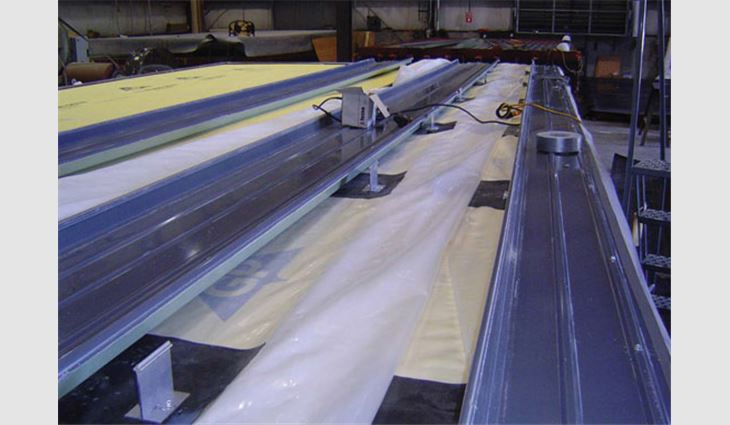 Photo courtesy of Chadwick Technology Pty. Ltd., Killarney Heights, Australia
Photo courtesy of Chadwick Technology Pty. Ltd., Killarney Heights, Australia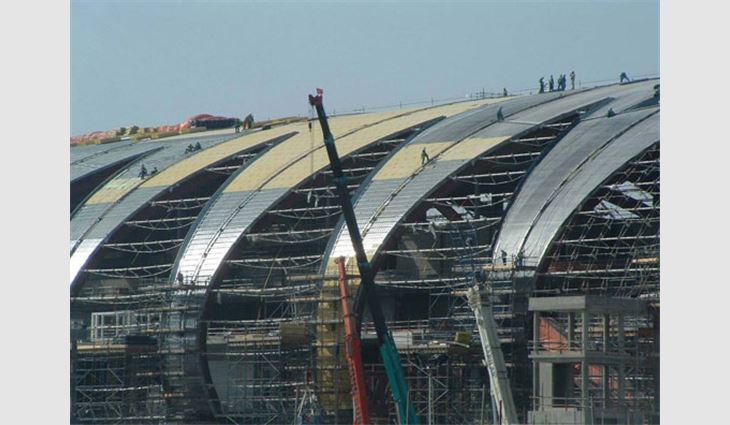 Photo courtesy of Chadwick Technology Pty. Ltd., Killarney Heights, Australia
Photo courtesy of Chadwick Technology Pty. Ltd., Killarney Heights, Australia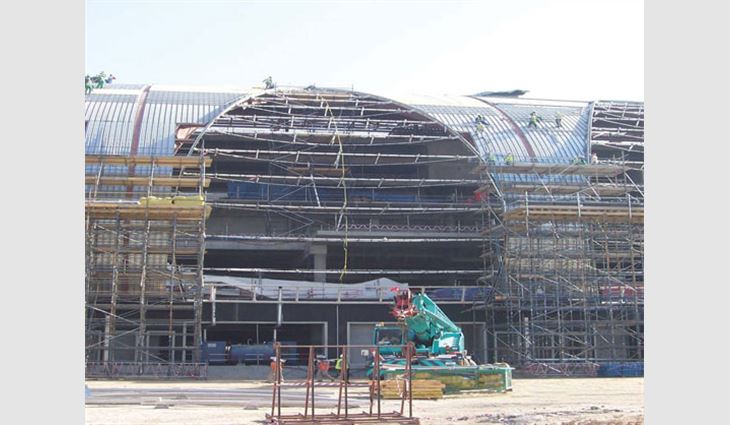 Photo courtesy of Chadwick Technology Pty. Ltd., Killarney Heights, Australia
Photo courtesy of Chadwick Technology Pty. Ltd., Killarney Heights, Australia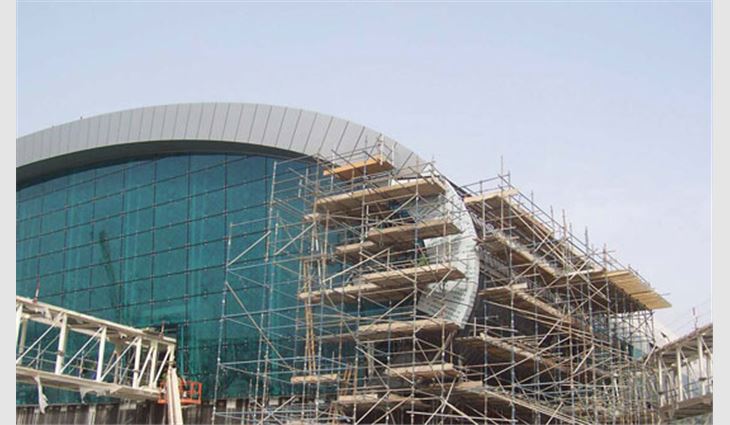 Photo courtesy of Chadwick Technology Pty. Ltd., Killarney Heights, Australia
Photo courtesy of Chadwick Technology Pty. Ltd., Killarney Heights, Australia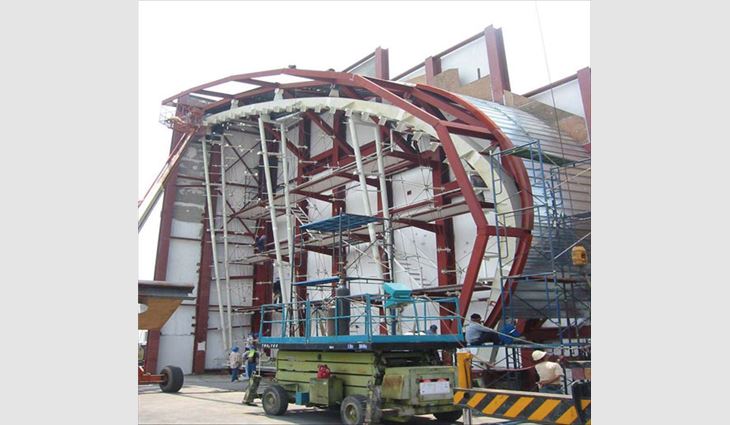 Photo courtesy of Chadwick Technology Pty. Ltd., Killarney Heights, Australia
Photo courtesy of Chadwick Technology Pty. Ltd., Killarney Heights, Australia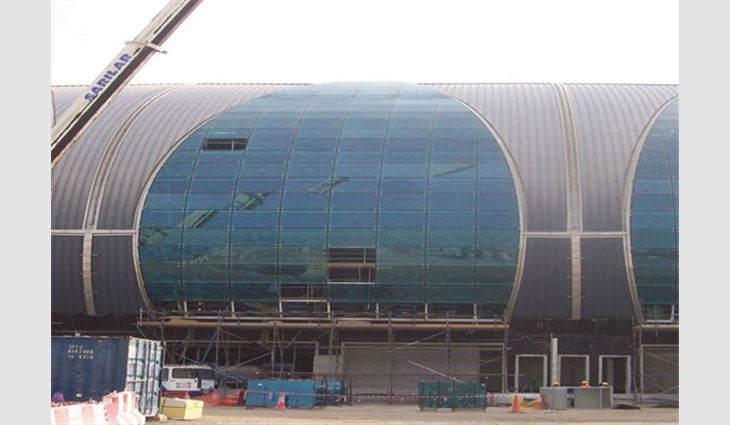 Photo courtesy of Chadwick Technology Pty. Ltd., Killarney Heights, Australia
Photo courtesy of Chadwick Technology Pty. Ltd., Killarney Heights, Australia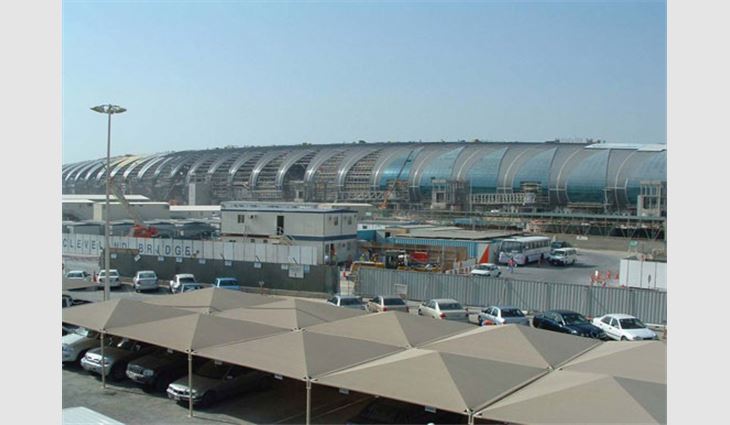 Photo courtesy of Chadwick Technology Pty. Ltd., Killarney Heights, Australia
Photo courtesy of Chadwick Technology Pty. Ltd., Killarney Heights, Australia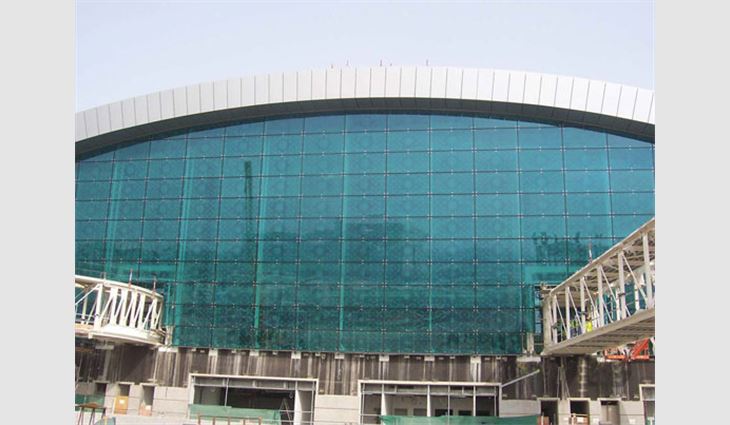 Photo courtesy of Chadwick Technology Pty. Ltd., Killarney Heights, Australia
Photo courtesy of Chadwick Technology Pty. Ltd., Killarney Heights, AustraliaDubai International Airport, Dubai, United Arab Emirates, is quickly becoming an international hub for Emirates Airlines. The airline is expanding its routes and increasing passenger capacity and has decided to increase its building capacity, as well.
When Dubai International Airport decided to expand one of its buildings to accommodate up to 30 wide-bodied aircrafts, including the new Double-Decker Airbus A380a, airport representatives chose Al Abbar Aluminum, Dubai, as the contractor for the building's external envelope. Al Abbar Aluminum, in turn, approached Chadwick Technology (M.E.) Branch, Dubai, a branch of Chadwick Technology Pty. Ltd., Killarney Heights, Australia, and asked it to install the expanded building's roof system. Chadwick Technology had assisted Al Abbar Aluminum in putting together its proposal.
"Chadwick Technology has developed a reputation for being involved in airport construction throughout Southeast Asia," says Bill Mansell, Chadwick Technology's managing director.
Al Abbar Aluminum's proposal was successful, and Chadwick Technology was awarded the contract for installation of the expanded building's roof system in September 2004.
Technically complex
The 1-km- (0.62-mile-) long expansion is adjacent to the existing international air terminal and makes the overall terminal length about 2 km (1 1/4 miles). The building's structural framework consists of trusses at about 10-m (33-foot) centers with structural purlins varying from about 4-m (13-foot) to 6-m (20-foot) centers.
Chadwick Technology manufactured its Chadeck structural deck for the project on-site from 1.2-mm (approximately 18-gauge) galvanized steel. Structural decks were 75 mm (3 inches) deep and capable of spanning up to about 6 m (20 feet). The deck was side-stitched and mechanically fastened.
About 80,000 m2 (861,141 square feet)—or about 1,300 t (2,866,500 pounds)—of deck material was installed.
Secondary structural steelwork consisted of Z-purlins—which ran at right angles to the structural deck direction—spaced at 600-mm (24-inch) centers and mechanically fastened to the structural deck. 100-mm- (4-inch-) thick Rockwool insulation was laid between the secondary Z-purlins.
Georgia Pacific LLC then specially prepared a 16-mm- (5/8-inch-) thick plasterboard layer with a bonded fiberglass face. The plasterboard was mechanically fastened to the Z-purlins.
"This layer provides a base for the subsequent membrane and additional mass within the roof construction for sound transmission loss," Mansell says.
Next, a 1.2-mm- (about 45-mil-) thick Carlisle SynTec Inc. EPDM membrane was spot-adhered to the plasterboard as an underlayment and temporary waterproofing layer followed by 0.8-mm (0.031-inch) galvanized fluorocarbon-coated steel roof sheeting in Chadwick Technology's Chadzip 400 roofing profile. The roof sheeting, which weighed about 750 t (1,654,000 pounds), was secured to the Z-purlins with aluminum fixing clips.
Extruded aluminum clips were developed specifically for the project. Clips were clamped to the roof sheeting rib and support a two-directional extruded aluminum framework, which supports 6-mm- (1/4-inch-) thick Mitsubishi Chemical Functional Products Inc. composite ALPOLIC® aluminum cladding panels. The panels have a fluorocarbon coating.
The geometry of the building presented a particular challenge to Chadwick Technology.
"The cross section of the building is an ellipse, and the building is curved in elevation and plan," Mansell says. "This 3-D geometry means that, theoretically, every structural component and roof sheet is different in curvature."
A special computer program was developed to indicate curvature location and achieve the required elliptical shape.
"To provide an idea of the complexity of the curvature, maximum curvature was about 60 m (197 feet) in radius and miniature curvature about 10 m (33 feet) in radius," Mansell says.
Preliminary work
Preliminary work for the project was extensive.
"Although the basic design was determined by the architects, Chadwick Technology was responsible for the detailed design and testing of all components," Mansell says.
Chadwick Technology produced and submitted about 450 drawings and 1,000 pages of engineering design, calculation and assessment during the preliminary work stages. Eighty-five samples and mock-ups were prepared and submitted, as well. In addition, a quality-assurance manual was prepared and required to interface with other on-site manuals.
"The preliminary work took more than 12 months to complete," Mansell says.
Preliminary testing was especially intensive during this project.
Initial tests involved building three mock-ups totaling about 1,000 m2 (10,764 square feet). These mock-ups were tested for water penetration under substantial velocities. Fire and structural testing were done by FM Global.
On-site manufacture
A 2,500-m2 (26,911-square-foot) factory was constructed specifically for on-site production of roofing components.
"For many years, Chadwick Technology has favored on-site manufacture for major roofing components," says Mansell.
The factory contained a rollformer for the production of Chadeck structural deck; a rollformer for the production of the Chadzip 400 roofing profile; two curving machines, one for the curving of the structural deck to variable radii required by the elliptical shape of the main roof and one for curving the Chadzip 400 roofing profile; a 75-t (165,000-pound) brake press for the production of stainless steel and galvanized steel flashings and trims; a guillotine for standard sheet metal production; and vertical stamping machines used for special bracket and clip production.
Additionally, the factory had warehouse facilities for imported materials, equipment and hardware.
Mansell says: "The total labor in the factory was about 45 personnel and included rollformer operators, sheet metal workers, welders and secondary labor."
Overcoming obstacles
There were a number of difficult situations encountered during this project.
"Because of deaths at the site during the early stages of construction, safety requirements were at an extremely high level," Mansell says. "All roofing workers were required to be attached to the structure with inertia reel harnesses, and we had permanent on-site safety staff to ensure all our safety rules were followed."
Site transportation also was an issue. Because the structural deck and roof profiles were well in excess of 20 m (66 feet) in length, special trailers were constructed for on-site material transportation.
"The total weight of material used in this project was about 6,000 t (13,230,000 pounds)," Mansell says. "Chadwick Technology designed spreader bars and hoisting equipment, as well as a landing platform, which were used to assist in overall material handling."
A rewarding job
Chadwick Technology's work on Dubai International Airport is nearly finished though variation work relating to service penetrations is in progress and anticipated to be completed by November. However, the project already has proved to be a significantly challenging and rewarding experience for Chadwick Technology.
Mansell says: "This has been the most complex and technically difficult project that Chadwick Technology has been involved with to date."
Ashley St. John is Professional Roofing's associate editor.
Project name: Dubai International Airport Expansion
Project location: Dubai, United Arab Emirates
Project duration: September 2004-present
Roof system type: Composite screened
Roofing contractor: Chadwick Technology Pty. Ltd., Killarney Heights, Australia
Roofing manufacturers: Georgia-Pacific LLC, Atlanta; Carlisle Syntec Inc., Carlisle, Pa.; and Mitsubishi Chemical Functional Products Inc., Tokyo
COMMENTS
Be the first to comment. Please log in to leave a comment.